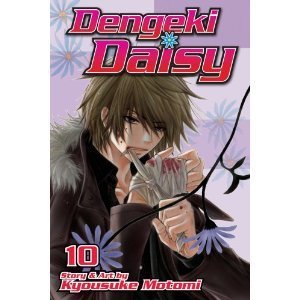S.Q. Eries's Blog, page 63
November 15, 2012
A Tour of Japanese Pop Culture, Part 5: Maneuvering without Street Signs
As mentioned in my last post, we had a difficult time locating Swallowtail, but the butler café was not the only place we had trouble finding. Much of our problems stemmed from the fact that the vast majority of Japanese streets are not marked and buildings have no address numbers. (Makes me wonder how postal workers and cabdrivers get the job done.) Complicating matters is that what looks like a street on a map might actually be a pedestrian-only footpath. So the only things I really had to navigate with were major landmarks (like train stations) and geometry, which can be pretty daunting in a landscape like Tokyo.
Because my husband rented a mobile modem for his iPhone, we attempted using the GPS features of Google and Yahoo maps, but that was a FAIL in the most epic sense of the word. Instead of getting us to our State Department friends’ townhouse, it sent us a mile in the wrong direction, smack into Roppongi’s nightclub district. So our first taste of Tokyo was being hopelessly lost at 8 AM, watching hungover salary men and office ladies bid farewell to their nighttime companions while middle schoolers passed on their way to Saturday morning classes (yes, there’s a middle school located in the middle of the Roppongi nightclubs).
GPS failed again when we were trying to locate our hotel in Kawasaki. It literally sent us in circles, the dot representing the hotel’s supposed location constantly shifting on the iPhone screen. Finally, I used the iPhone to access the hotel website, found a picture of the hotel building, and began looking around the area for a matching building (THAT worked).
Suffice to say, for those of us who depend on street signs and building numbers getting from place to place in Japan can be challenging. One way around it is to take a taxi everywhere, but that can get expensive. So here’s a couple things we learned that might help you find your Japanese destination.
1. Get a picture of the location. Even if there’s no exterior photo available, just knowing what the logo of a store or restaurant looks like might help you pinpoint it quicker.
2. Find out what floor your destination is on. Tokyo’s full of high-rises, and many buildings house multiple businesses. Knowing that your restaurant is two levels underground or on the 15th floor will help a lot.

Handy subway exit sign
3. If the place is near a train station, find out what the nearest subway exit is. Subway stations often extend several hundred meters underground, and, interestingly, their exits are numbered and well-labeled in contrast to the streets above. Some subway exits even have signs indicating major buildings and attractions in their vicinity. So if you know that your destination is near Mita Station Exit A10, you will be that much closer to your goal.
4. Landmarks. In lieu of signs, street level landmarks are your best guide. That was what our State Department friends used to guide us to their house (“Make a right at the Golf Partner store, pass two Mexican restaurants, make a left at the diva Buddha statute…)
5. And if all else fails… ask for directions. The Japanese are by and large a congenial people. Even if they can’t understand a word you’re saying, they’ll do their best to help, or at least point you in a direction where they think you can get help.
Next up, the Ghibli Museum!


November 12, 2012
A Tour of Japanese Pop Culture, Part 4: Swallowtail Butler Café (and How to Get There)
Two days after our high energy maid café visit, we had a completely different experience at Otome Road’s Swallowtail Butler Café!
Otome Road is a street in Tokyo’s Ikebukuro (anime fans will recognize the district as the setting for Durara!) with businesses targeted toward female anime/manga enthusiasts. Specifically yaoi/BL fangirls and fujoshi. (If you’re unfamiliar with the terms yaoi, BL, and fujoshi, erm… go to Wikipedia.)
But there’s more to Otome Road than dojinshi. It also caters to anime cosplayers and Lolita fashion enthusiasts with shops such as K-Books Cosplay-kan. But once a girl’s dressed in high style, she needs a place to strut her stuff. And where better to live out princess fantasies than at Swallowtail, Japan’s legendary butler café!
The Swallowtail Experience
Seriously, Swallowtail looks like a place you could take the Queen. It resembles a Victorian-era tearoom and offers an array of fine teas, scones and pastries, and light entrées. It has a strict no photography policy (NO pictures. AT ALL.) so I can’t show any of the interior, but take my word, it’s an absolute delight. The furnishings and chandeliers sparkle, the china is exquisite, the drapes are elegant, and there’s a wealth of nice touches from the teapot cozies to the embroidered swallowtail butterflies on the butlers’ livery. As for the patrons, they looked like they’d just come from William and Kate’s wedding. Hats, frills, gloves, matching purses – our fellow café guests were as much a part of the Swallowtail aura as the butlers.
Suffice to say, my husband and I and the two Minnesotan sisters from our group who also got 4:55 pm reservations felt woefully underdressed. The only information we had prior to showing up was that Swallowtail was Tokyo’s best butler café and that we needed reservations. We hadn’t realized it would be so highbrow. T-shirts and jeans were fine for the maid café, but our casual garb pretty much screamed foreign tourist at Swallowtail.
Still, the staff was extremely gracious. I don’t know how the regulars felt about us intruding on their velvet and gilt turf, but the butlers did not hesitate to give us the royal treatment. That, though, took some getting used to. Swallowtail doesn’t offer dancing maids or karaoke songs, but it does provide a refined air and attention. Lots of it.
Each party gets its own butler, and you ring a bell at your table to summon him. Almost everyone orders tea, and your butler will pair your drink with a cup from Swallowtail’s china collection. As he serves, he will explain the cup’s history and origins and the reason he selected it. My husband got a Japanese cup to go with his Japanese tea, and I got one with painted flowers to match the floral fragrance of mine. When you need a refill, you’re to ring the bell and the nearest butler will pour for you. We didn’t realize that at first, and the sisters’ butler got really embarrassed and flustered when one of them began pouring her own tea!
Yes, they ARE determined to wait on you hand and foot. If you go to the restroom, they escort you there (and back!) and carry your purse for you. And whenever they take their leave, they formally excuse themselves and bow (LOTS and LOTS of bowing).
Our tour’s pamphlet described Swallowtail as “pretty boys doting on your every need,” but that’s not quite accurate. They DO dote on your every need, but with the exception of one young butler who looked like a glam rock musician in tails, the age of the staff ranged from mid-20s to late 30s. Our butler seemed to be around 30, and the head butler appeared to be in his 50s. They are good-looking though and make a distinguished group in their ties and tails.
As for the clientele, the only male patrons were my husband and one other fellow on a date. He was also a first-timer, his date seemed like a regular. Everyone else was female, alone or in small groups, in their 20s or 30s, and the majority dressed in Lolita outfits. At least, that was the Friday evening crowd. Three Canadians from our group had a reservation later that night and told us the place was filled with intimidating older ladies (late 30s to 50s?) dressed to the teeth. Apparently, wanting to be treated like royalty isn’t limited to the younger set.
Important information for visiting swallowtail
So if you’ve decided you must experience Otome Road’s classiest establishment for yourself, here are some key things to keep in mind.
1. You MUST have a reservation. Reservations can be made on their website. Because it is in Japanese, you may have to enlist the help of someone who knows the language.
Another way to make a reservation is in person. While online reservations have to be made a couple days in advance, Swallowtail does have limited “drop-in” reservations (that’s how the Minnesota sisters, my husband and I got in). You simply drop by the cafe and ask the host on duty if there are reservations remaining for the day. We handled this by bringing a sheet that said, “Do you have reservations available?”in Japanese to show to the host. He responded by writing down the available times for us.
2. Parties are limited to small groups. Our tour guide told us three was the max, but I did see a party of four at one table. At any rate, Swallowtail definitely could not have accommodated the 15+ party that we had at Maidreamin.

Stairs to Swallowtail
3. Allot ample time to find the café BECAUSE IT’S EASY TO MISS! Swallowtail is located BELOW ground level and has a very subdued exterior. Of the four parties from our tour group that wanted to go, ALL had difficulty locating it, and one group even missed their appointment because they couldn’t find it in time. (The butlers did send them off with scones though.) My husband and I actually circled the block twice, bought a drink at the Family Mart on the ground level, and went upstairs to the K-Books store above the café before we finally noticed the stairs leading to the basement level. While the Swallowtail placard is refined and elegant, it gets completely obscured by the brightly lit Family Mart and K-Books signs.

Swallowtail’s Location.
You can barely make out its sign where the blue Christmas lights are.
So if you’re headed to Swallowtail, what you really want to keep an eye out for is this corner where K-Books and a Family Mart are located. Find this building and then look for the stairs leading down.

Reservation Slots
4. Appointments are for a SET timeframe. As mentioned above, if you’re overly late, you lose your appointment. But there’s no dawdling either. Once your hour and twenty minutes are up, it’s time to go. And if you’re slow about it, the butlers will very politely but very firmly usher you out. This is Japan, after all, and they’re all about punctuality.
5. And of course, go in your best clothes. (So you don’t end up like us!)
Keep these things in mind, and you’ll have an unforgettable time at Japan’s premier butler café!


November 7, 2012
A Tour of Japanese Pop Culture, Part 3: the Akihabara Maid Café!
 The tour group we joined was comprised of anime, manga, and gamer otaku so of course one of our stops was Tokyo’s electric town, Akihabara. In addition to electronics, anime goods, and gaining centers, Akihabara also features maid cafés! A visit to Maidreamin was listed as an optional tour activity, but when the guide asked who was interested, more than half the group raised their hands.
The tour group we joined was comprised of anime, manga, and gamer otaku so of course one of our stops was Tokyo’s electric town, Akihabara. In addition to electronics, anime goods, and gaining centers, Akihabara also features maid cafés! A visit to Maidreamin was listed as an optional tour activity, but when the guide asked who was interested, more than half the group raised their hands.
These establishments are, as my husband likes to describe them, a kind of modern-day geisha house. Just like geisha, these women entertain their guests with song, food, and drink. But instead of kimono, they wear ruffled and ribboned maid costumes, and their songs are belted karaoke style instead of sung with traditional Japanese instruments.
When these cafés first appeared, their clientele was solidly male. Now couples frequent them as well. For those who are curious, the gender ratio of our group was about 50-50.
 The experience was by far the most rollicking part of the tour. Maidreamin is located on the sixth floor of a small building, and when we emerged from the cramped elevator, we were greeted with cheers, applause, and high-fives. I thought at first that it was part of the café “service,” but it turned out to be other patrons! Another group’s party was in full swing, and they totally wanted us to join. The salarymen were so friendly and enthusiastic we had to join in, especially when they ordered up a song, broke out the glow sticks (yes, maid cafés turn into mini-rock concerts), and began showing us the accompanying dance moves. It wasn’t long before we were all laughing and calling to one another in broken English and mangled Japanese.
The experience was by far the most rollicking part of the tour. Maidreamin is located on the sixth floor of a small building, and when we emerged from the cramped elevator, we were greeted with cheers, applause, and high-fives. I thought at first that it was part of the café “service,” but it turned out to be other patrons! Another group’s party was in full swing, and they totally wanted us to join. The salarymen were so friendly and enthusiastic we had to join in, especially when they ordered up a song, broke out the glow sticks (yes, maid cafés turn into mini-rock concerts), and began showing us the accompanying dance moves. It wasn’t long before we were all laughing and calling to one another in broken English and mangled Japanese.
While I can’t guarantee all café patrons will be so exuberant, you can count on the maids to be. Their job is to be super perky and super friendly and create a fun atmosphere for everyone. The staff had little knowledge of English, but they were no less attentive for it. When one of our guys hung back during the karaoke portion, a maid came right beside him to encourage him to clap along. They’re determined to make sure all patrons have a good time.
I must emphasize that this is all good, clean fun. These establishments do serve alcoholic drinks, but they also have rules. Standard ones are: no touching, no asking for personal information, no touching, no pictures (except for those taken by the café staff for a fee), no touching, and did I mention, NO TOUCHING.
They will, however, sing requested songs on their mini-karaoke stage with energy and verve, and at other cafés, maids will play games like Connect Four with patrons. And depending on what you get from the menu, you could get a little chant or poem to go with your order. Another tour participant and I ordered omrice (omelette-rice: fried rice wrapped in an omelette and topped with ketchup). Most maid cafés serve this dish with a heart or “LOVE” rendered in ketchup. Our maid actually took requests. So I picked Hello Kitty (“Kitty-san!”) and the other guy, a tremendous Naruto fan, chose Naruto. Our omrice art were an exception to the photo rule, and I’m glad we got a shot before they got gobbled up.

Naruto in ketchup

Hello Kitty in ketchup
(she does look like she’s having a nosebleed though…)
Oh, and I should mention that in addition to food, drink, glow sticks, songs and photographs, maid cafés will charge an hourly sitting fee (ours was 500 yen per hour). So keep that in mind should you choose to party all night long at a maid café.
We spent an hour at Maidreamin and left at about 5 PM to explore more of Akihabara (yup, Japanese salarymen were partying on out at the maid café in the late afternoon). At about 7:30 PM, we headed for the subway and happened to run into some of our fellow café patrons. Suffice to say, the greetings exchanged were loud, somewhat tipsy, and entirely good-natured.
So much fun, Akihabara.
Next up, Butler Cafe Swallowtail!


October 31, 2012
The Next Big Thing (Week 22)
In a few days, I’ll continue my Japan pop tour with posts on maid and butler cafes, but right now here’s something a little different…
Today I’m part of a blog tag of writers talking about their work in progress (WIP). Last week, I got tagged by my awesome crit partner Alexandra Tys O’Connor. This week I pass the baton to a few other writer friends. All are wonderfully talented and one has just released her first novel! They will blog about Their Next Big Things on November 7, but for now, here’s the scoop about mine.
1- What is the working title of your book? Cynisca and the Olive Crown.
2- Where did the idea come from for the book? I was researching the ancient Olympics for an entirely different story, and I discovered Cynisca, an actual Greek princess involved in the Olympics. There’s not much information about her, but the facts I had were intriguing enough that I shelved the other project to work on her.
3- What genre does your book fall under? YA historical
4- Which actors would you choose to play your characters in a movie rendition? Uhhh… dunno. Despite living in LA, I actually don’t watch a lot of American TV or movies. (Blame Japanese anime and Korean dramas).
5- What is the one-sentence synopsis of your book? A Spartan princess seeks to prove herself by challenging a political adversary in the Olympic chariot race.
6- Will your book be self-published or represented by an agency?
I have zero instinct for marketing. Meaning that I’m going the traditional route and am on the quest for an agency.
7- How long did it take you to write the first draft of your manuscript? I tend to revise chapters as I go so it took about a year.
8- What other books would you compare this story to within your genre? Shecter’s Cleopatra’s Moon. Both have grand ancient civilizations for settings and relatively unknown and unusual princesses as main characters.
9- Who or What inspired you to write this book? I have a soft spot for ancient Greek history. That and the answer to Question 2 above.
10- What else about your book might pique the reader’s interest? A lame Spartan king (yes, there was one!), ancient Sparta beyond the armor and spears, royal scandal, sport rivalries, and horses, lots of horses.
Thanks so much for dropping by! Next up (Week 23) are some of my very talented writer friends. Check out their blogs next Wednesday when it’s their turn to post answers to these same questions about their own works-in-progress!
Carrie Arcos (whose debut novel Out of Reach has just been released!)


October 29, 2012
A Tour of Japanese Pop Culture, Part 2: On the farm with Mother Bokujo!
 I mentioned before that my Japan itinerary was “less-than-conventional,” and today’s post is about an attraction most non-Japanese tourists will never hear of: Mother Bokujo!
I mentioned before that my Japan itinerary was “less-than-conventional,” and today’s post is about an attraction most non-Japanese tourists will never hear of: Mother Bokujo!
The only reason we went was because our State Department friends (with whom we stayed our first couple days in Japan) were taking their child and invited us to come along. From their descriptions, I thought it would be a little farm with an animal petting area for kids. It turned out to be a lot more. And a lot bigger.
 Mother Bokujo (which translates to Mother Farms) is more like a theme park modeled after a county fair. They do produce their own dairy products (ice cream, cheese, milk) which they offer to visitors and have sheepdog and other animal demonstrations. But they also have a Ferris wheel, human-sized hamster balls for kids to run around in, and a dog-shaped bus that woofs as it goes by.
Mother Bokujo (which translates to Mother Farms) is more like a theme park modeled after a county fair. They do produce their own dairy products (ice cream, cheese, milk) which they offer to visitors and have sheepdog and other animal demonstrations. But they also have a Ferris wheel, human-sized hamster balls for kids to run around in, and a dog-shaped bus that woofs as it goes by.
The idea behind Mother Bokujo is to give city kids a taste of country life. Tokyo being the highly urbanized, technologically advanced place it is, its inhabitants don’t experience much nature in their day-to-day lives (something folks in other major urban centers can relate to). So Mother Bokujo offers a chance to return and connect with rural life in the beautiful Chiba countryside.

Kids preparing for piglet chasing race.
And people come. We visited on a rainy Sunday, but despite the inclement weather, the place was packed with families. And Mother Bokujo definitely caters to kids with children’ programming, stroller parking lots, and a comfortable “family room” where mothers can nurse and do diaper changes.
 It wasn’t the sort of place I expected to find, but Mother Bokujo is not unique in Japan. On our way through Gunma Prefecture, we saw a sign for Ikaho Green Bokujo, and though we didn’t drop by, I think I have a pretty good idea of what it’s like.
It wasn’t the sort of place I expected to find, but Mother Bokujo is not unique in Japan. On our way through Gunma Prefecture, we saw a sign for Ikaho Green Bokujo, and though we didn’t drop by, I think I have a pretty good idea of what it’s like.


October 25, 2012
A Tour of Japanese Pop Culture, Part 1
It’s been a while since my last post, but there’s a very good reason for it. I’ve been on vacation. For me, that means no writing and going entirely offline. And by vacation, I don’t mean an extended weekend. My husband and I celebrated ten years of marriage with a 16-day trip to Japan.
We’d been planning this trip for years. Though in the aftermath of last year’s earthquake/tsunami we weren’t sure if we would go. Regarding our decision to travel there, it hinged mainly on a pair of friends who work for the US Embassy in Tokyo. At the time of the quake, they’d just had a baby, and the wife did leave the country with the child within a few days of the disaster. But after several weeks, they returned to Tokyo. We figured that if they felt Tokyo was safe enough for their child, it should be safe enough for us adults to visit.
Having made that decision, shopping for a tour was initially a bit of a challenge. Many agencies curtailed travel to Japan after the disaster, and the boutique anime/manga/otaku packages that we were interested in were particularly difficult to find. Fortunately, tourism to Japan picked up about a year after the quake, and we were able to cobble together the less-than-conventional trip we wanted.
While the areas hardest hit by the tsunami are still recovering, the places we visited – Tokyo, Chiba Prefecture, Gunma Prefecture, and Atami – were fine. You would never have guessed they’d had a quake. So if you’re considering Japan as a travel destination, I’d recommend going. We had a grand time, and I’ll be posting later about maid and butler cafés, Hello Kitty’s theme park, hot springs, and a visit to a genuine school festival in the Japanese suburbs.
 For now, I’ll leave you with photos of Japanese signage. Japanese is a very different language from English, but fortunately, the Japanese have a very visual culture. Plus, they translate a lot of their signs into English/Roman letters, which means English-speaking travelers can generally get around and receive vital information without too much difficulty. Their sense of style, however, is definitely different, which can lead to finding humor in the oddest places.
For now, I’ll leave you with photos of Japanese signage. Japanese is a very different language from English, but fortunately, the Japanese have a very visual culture. Plus, they translate a lot of their signs into English/Roman letters, which means English-speaking travelers can generally get around and receive vital information without too much difficulty. Their sense of style, however, is definitely different, which can lead to finding humor in the oddest places.

The warning’s almost poetic…

A flood warning sign (AIEEEE!!!!)


October 1, 2012
Research Ramblings: Horsey Sound Effects and the American Animal Lexicon
My current work in progress involves chariot racing, and given its substantial equine components, I’ve recruited the aid of horse owners Julie and The Boyz’ Mom to keep it real. (For more about them, read this post.) They love sharing about their horses, and hopefully you’ll get some entertainment out of our exchanges.
Once, during a manuscript swap, someone in my critique group commented on a word I used for a stable scene. The phrase in question was:
Squealing filled the air as thirty horses jostled and fought in the paddock.
He remarked that it sounded odd because “squeal” was a word he associated with pigs.
I certainly acknowledged his point. You’re more likely to see “squeal” in the context of pigs than horses. But I was intentional in selecting that word. Mainly because a couple months before I wrote that section, I was poking around researching at a stable, and an overly friendly pony scared the daylights out of me by running up and squealing at me.
Squealing, not whinnying. There is a difference.
It’s interesting how our lexicon has so many animal specific words to describe the noises they make. Dogs bark, howl, yap, or growl. Cats meow and purr. Sheep bleat. Horses have a larger list than most. They whinny, neigh, nicker, whicker, and occasionally snort. But any stable manager or groom can tell you that the range of noises they make go beyond this vocabulary.
For instance, horses grunt. Again, “grunt” is associated with pigs, but horses do it, too. I first time heard a horse grunting was at a show where one entry kept up a constant grunt-grunt-grunt the entire time she was in the ring. According to a lady familiar with that mare, that was a habit particular to that horse. When I mentioned it to my horse ladies, this is what they wrote back.
The Boyz’ Mom:
Titan grunts when he poops. They both make funny umph sounds when they are swimming in really deep water. Speaking of, when they poop while they are swimming it is hilarious.*Grunt* and in the wake “apples” floating.
If Titan is not in the mood to be bothered (like if it is really hot and someone stops to oogle him), he will grunt and stomp his foot as if to say GO AWAY.
When they are really happy and content, they make snuffy noises. Wrinkle up your top lip and do baby snorts with your nose and that is what it sounds like.
Julie:
Horses make all kinds of noises, so if you have a horse grunt or whine (yes, we have one that has a high pitched whine when he thinks he’s not getting a treat), it’s not wrong. Steve makes a rumbling noise if you don’t bring his treat quickly enough after his lesson. JP is the whiner. Since Steve is next to JP, I always make sure that JP gets a treat, too, because he sounds so pathetic if you ignore him.
Snuffling, whining and rumbling! I guess this means the take-away message is that if you’re doing a story involving animals, it pays to spend time with an actual critter to get a feel for their “lingo.”
So to the animal owners out there, what kind of “out of category” noises do your beasties make?


September 27, 2012
Manga Review: Bakuman Vol. 13
 Bakuman is the latest collaboration of Ohba and Obata, the creators of the wildly popular Death Note series. Unlike Death Note, Bakuman is more or less grounded in reality, but it is no less entertaining as it follows the ups and downs of a mangaka duo as they strive to make it big in the publishing world!
Bakuman is the latest collaboration of Ohba and Obata, the creators of the wildly popular Death Note series. Unlike Death Note, Bakuman is more or less grounded in reality, but it is no less entertaining as it follows the ups and downs of a mangaka duo as they strive to make it big in the publishing world!
This series is a personal favorite of mine, and Viz Media has just released Volume 13. (My reviews of earlier Bakuman volumes can be found here.)
Back Cover Blurb
After being told their current series Perfect Crime Party will not be turned into an anime, Moritaka and Akito start planning on ways to create a second series. Their best chance might be to do well in a new contest where they will compete with their rivals over who can create the best romance story!
The Review
Considering they’re barely into their twenties, Team Ashirogi’s doing extremely well. They’ve gotten a couple titles under their belt and now have a hit series in a major magazine. Many mangaka would consider this success, but for Muto Ashirogi, it’s not enough. Moritaka needs an anime to marry Miho. Having been told that Perfect Crime Party will not be animated, they find themselves in a predicament. If they want an anime, they need to produce a completely new series for publication, but their hands are tied maintaining their current manga. The only solution: figure out how to work on two projects at once.
Ohba’s done a great job of creating new scenarios where Muto Ashirogi have to push beyond their capabilities. This time, Akito is stretching himself writing for artist Shiratori while maintaining Perfect Crime Party. Meanwhile, Moritaka is learning to become an author himself when he takes full responsibility for Muto Ashirogi’s one-shot for the Super Leaders Love Fest. There’s an added level of tension because their additional work forces them to be apart, straining their relationship. It also takes its toll on Akito’s marriage, and Kaya’s reactions to the weird vibe between Moritaka and Akito give readers a heightened sense of how emotionally charged the situation is.
On the other hand, the Super Leaders Love Fest provides fodder for a host of comic moments. Interestingly, it is not a Jump proposition, but a perfect storm of mangaka wanting to tackle romance and Fukuda catalyzing it all at the Jump New Year’s party. By the way, it is kind of cool to see Fukuda convince the editor-in-chief considering all his talk about changing Jump back when he was Eiji’s assistant. Everyone’s motivations for writing romance and their stories vary widely, and the Bakuman creators do a great job of building anticipation for those one-shots. As for the final Love Fest rankings, they are both surprising and satisfying.
Speaking of rankings, this volume includes the results of a character popularity poll taken by Jump. Interestingly, neither Moritaka nor Akito claimed first place, and Hiramaru actually ranked above Akito. For fans of the Otter #11 Creator, they’ll get to enjoy Hiramaru living out his own romantic comedy in Chapter 114. Yoshida’s done a pretty good job of manipulating Hiramaru, but this time Hiramaru turns the tables on his editor by sneaking out for a date with Aoki. Watching Hiramaru man up is hilarious, and although Aoki’s reactions are somewhat far-fetched, the whole scenario is such fun that it doesn’t matter.
In Summary
Bakuman serves up a nice blend of drama and comedy as Team Ashirogi strives toward creating a second series. The tension is reminiscent of when they nearly went separate ways in high school, but now readers get to see them handle the situation as adults with adult responsibilities. But even as Moritaka and Akito strain themselves to the breaking point, there are lots of laughs to be had as the participants of Jump’s Super Leaders Fest tackle a genre that’s a tricky sell in shonen manga – romance!
This title is highly recommended for young teens and up.
First published at the Fandom Post.


September 21, 2012
Book Review: Spartacus: Morituri
 Spartacus is a popular TV series that depicts ancient Rome and gladiators in all their gory, violent glory. Now fans of the franchise can enjoy more of the Spartacus world as Titan Books is releasing novels based off the show, one of which is Spartacus: Morituri.
Spartacus is a popular TV series that depicts ancient Rome and gladiators in all their gory, violent glory. Now fans of the franchise can enjoy more of the Spartacus world as Titan Books is releasing novels based off the show, one of which is Spartacus: Morituri.
Back Cover Blurb
Batiatus and Solonius vie with each other for the favor of one Marcus Licinius Crassus, an Equites who aims at the Praetorship. Thrilled by the bloody violence of the fights, Crassus decides to set up his own gladiatorial school. In the arena, the Batiati are ground down by injury and death, while Crassus’ numbers never seem to shrink. Can the ludus survive against such odds?
The Review
Spartacus: Morituri is based off the Starz TV series, but familiarity with the show is not necessary to read the novel. I haven’t watched any TV episodes, but the bits of backstory in the narrative were sufficient for me to grasp the larger Spartacus arc. What did trip me up was some of the terminology and dialogue. It being a Roman period piece, Morris uses Roman terms for everything from rooms to gladiator weapons. While this should please enthusiasts of that era, not all the terms can be figured out from context, and the book provides no glossary. In addition, the characters speak in a kind of dialect. For example, this interchange takes place before a party between Lucretia and Ilithyia:
“Gods smile upon husband this day. He responds with raised voice in gratitude.”
“Spirits raise to hear the gods show generous heart,” Ilithyia said with a tinkling laugh. “But such bleating calls to mind sacrificial pig awaiting slaughter!”
I assume their speech is meant to reflect Latin sentence structure, but it does take some getting used to.
As to Morituri’s plot, it’s not so much an epic adventure as it is a tale of intrigue. The novel begins shortly after Spartacus has defeated Theokoles and become Champion of Capua and Batiatus’ ludus. But the focus, especially for the first half of the novel, is not so much on Spartacus and his fighting prowess, but the wheelings and dealings of his owner Batiatus, whose household is sliding into debt. The new lanista Hieronymus has come to Capua to debut his gladiators, the Morituri, and once Batiatus learns Hieronymus’ patron is the wealthy Roman nobleman Crassus, he’s desperate to curry Crassus’ favor. Batiatus comes off as a vulgar politician as he kisses up to his betters (often with little finesse); treats his lessers with contempt; and spews profanity within his home.
The intrigue ramps up once Batiatus and Hieronymus agree to a match with Batiatus’ fortunes weighing in the balance. A strange malaise falls upon Batiatus’ gladiators, affecting not only their bodies, but their minds. Nightmares afflict them, and the stable scenes are less about men training (though there are a couple passages about Spartacus perfecting his new two-sword technique) and more about the discord caused by their hallucinations. Making things worse is Mantilus, Hieronymus’ gladiator trainer, who exudes a demonic aura. With the ludus in disarray and the Morituri’s white-eyed, tattooed overseer lurking around, rumors of witchcraft run rampant, terrifying gladiators and Batiatus’ household alike.
Spartacus, though, is the notable exception. Despite his own eerie visions and sapped strength, he refuses to believe Mantilus possesses magic powers, with seemingly superhuman stubbornness. Therefore, it is not surprising that he is the one with enough presence of mind to figure out the truth behind Mantilus and the plague affecting the ludus.
Once the mystery is solved, what follows is a predictable plot for revenge. It is interesting though to see Solonius, Batiatus, Oenamus, and Spartacus working together, the lanistae to crush the one who’d nearly ruined them and the gladiators to avenge their fallen brethren. The three-way match in which they exact retribution turns the spotlight on the gladiator arena with intense, if harrowingly graphic, fight descriptions. For those wanting to read about blood on the sand, they will find it in those pages.
By the way, the cover blurb advertises Morituri as a “tale of blood, sex and politics.” There’s definitely politics with all of Capua trying to cozy up to nobleman Crassus. Morituri also delivers blood, though much of it comes in the form of nightmares and gladiators having crazed episodes in their stable. Regarding sex, there is sex aplenty with an orgy scene and Batiatus availing himself of his slaves, but it never comes into play as a tool for love or power. It just serves as part of the tawdry Roman background.
In Summary
Morituri is not epic but does provide a glimpse of Capua at its depraved worst with its citizenry vying for wealth and power on the backs of slaves, gladiators included. Pages abound with the machinations of Batiatus and his rivals, and although there are only two major gladiator tournaments, the story grips readers in a different way by besetting the city’s fiercest fighters with an enemy they cannot cut or even pinpoint.
First published at the Fandom Post.


September 17, 2012
Manga Review: Dengeki Daisy Vol. 10
Bad boy/good girl love stories are popular in shojo manga, and for those who enjoy a dash of cyber intrigue in their romances, Kyousuke Motomi’s Dengeki Daisy is worth checking out. Volume 10 has recently been released, and you can read on for the review. (Also, for those who are interested, you can click here for my reviews of earlier volumes).
 The story centers on orphan Teru Kurebayashi, who, after the death of her beloved older brother, finds solace in the messages she exchanges with Daisy, an enigmatic figure who can only be reached through the cell phone her brother left her. One day, she accidentally breaks a window at school, and as a result winds up becoming a servant for Kurosaki, the delinquent school custodian. Although brusque and rude, he somehow always shows up in her time of need, and Teru finds herself increasingly drawn to him.
The story centers on orphan Teru Kurebayashi, who, after the death of her beloved older brother, finds solace in the messages she exchanges with Daisy, an enigmatic figure who can only be reached through the cell phone her brother left her. One day, she accidentally breaks a window at school, and as a result winds up becoming a servant for Kurosaki, the delinquent school custodian. Although brusque and rude, he somehow always shows up in her time of need, and Teru finds herself increasingly drawn to him.
Back Cover Blurb
A powerful organization that was after Kurosaki’s “Jack Frost” virus suddenly falls apart, but Kurosaki can’t rest easy since Akira was somehow involved. Furthermore, Akira tells Kurosaki that Teru is still a target! Can Kurosaki protect Teru from Akira’s menacing schemes?
The RevieW
Fans who prefer lighter high school fare will enjoy the first part of Volume 10. Chapter 45 is reminiscent of the early Daisy-looking-out-for-Teru-the-bullied-scholarship-student chapters. Chapter 46 entails a bunch of shojo silliness as Teru’s female friends try to guide her in getting her relationship with Kurosaki to progress. But although neither of these arcs involves Akira, the threat he poses constantly lurks in the back of our heroes’ minds, and not surprisingly, the focus returns to him in the second half of the book.
I mentioned in my review of Volume 9 that with so many issues settled, Motomi-sensei would have to shake things up to keep this title interesting, and she does that with a shift in Kurosaki’s attitude towards Akira. Just before Akira reenters the story, Kurosaki comes to term with everything Soichiro did for him. In one sense, he’s able to put to rest the guilt he’s been carrying, but in another sense, he comes to see Akira with new eyes. Whereas Akira was simply the enemy before, Kurosaki now wants to save him, but given the elevator stunt Akira pulls in Chapter 48, redeeming Akira will be a significantly long project. By the way, Motomi-sensei admits in an author’s note that Kurosaki’s rescue of Teru is improbable even to her but offers the justification that her editor gave.
Another thing Motomi-sensei does to increase tension is introduce a new element of romantic angst. In the spirit of unlikely shojo romances, she throws together Teru’s two friends that fit that bill the best: Rena and Kiyoshi. The attraction forming between the pair feels forced, and to be honest, I’m less interested in how things will play out between them and more interested in the third person involved in their romantic equation, Rena’s fiancé. He injects a new bit of mystery into the story with his connection to Akira, and I look forward to seeing how he might manipulate Rena to achieve his goals.
In Summary
Volume 10 serves up a couple of fluffy chapters where Teru’s main concern is high school finals and perfume before reverting back to cyber-related intrigue. While Akira’s psycho bad attitude is getting old, Motomi-sensei livens things in the intrigue department with Rena’s mysterious fiancé. Between him and the budding relationship between Rena and Kiyoshi, Dengeki Daisy looks as if it could go on for at least a couple more volumes.
First published at the Fandom Post.






